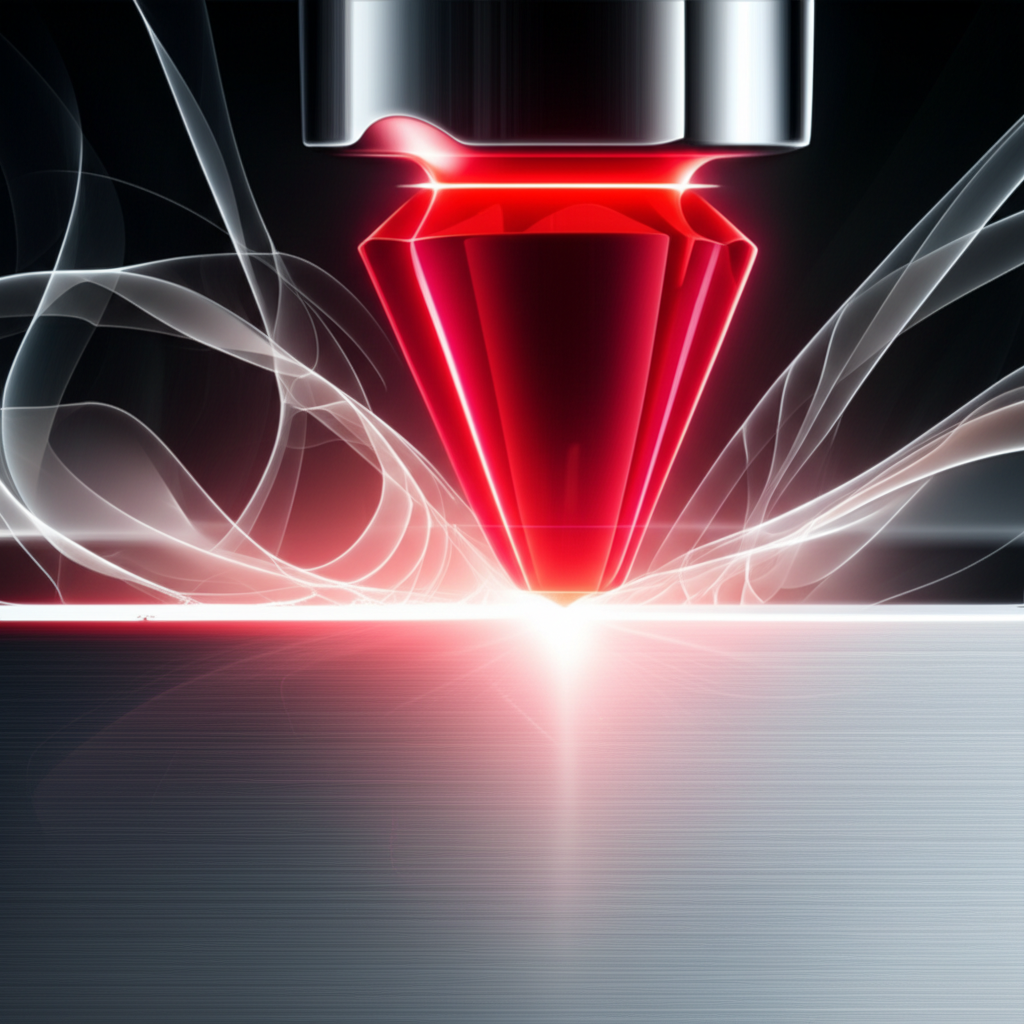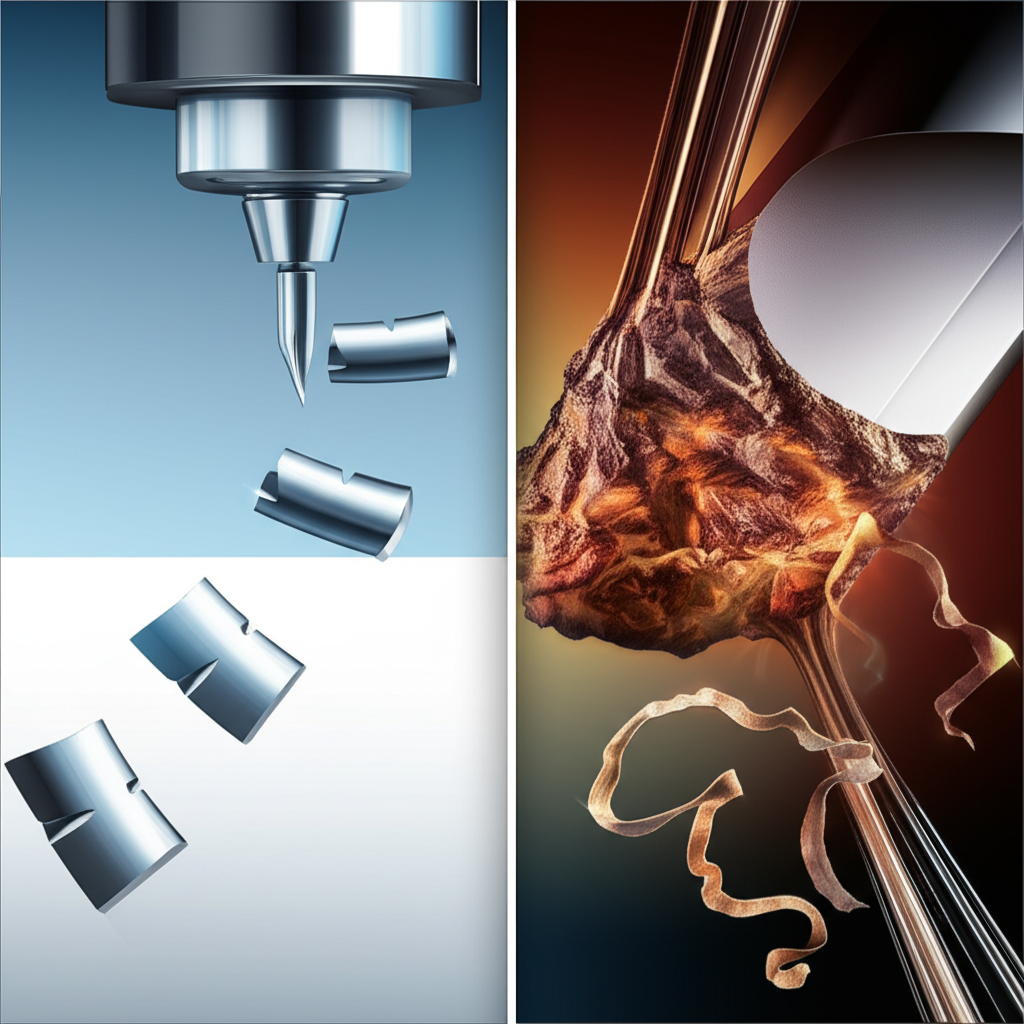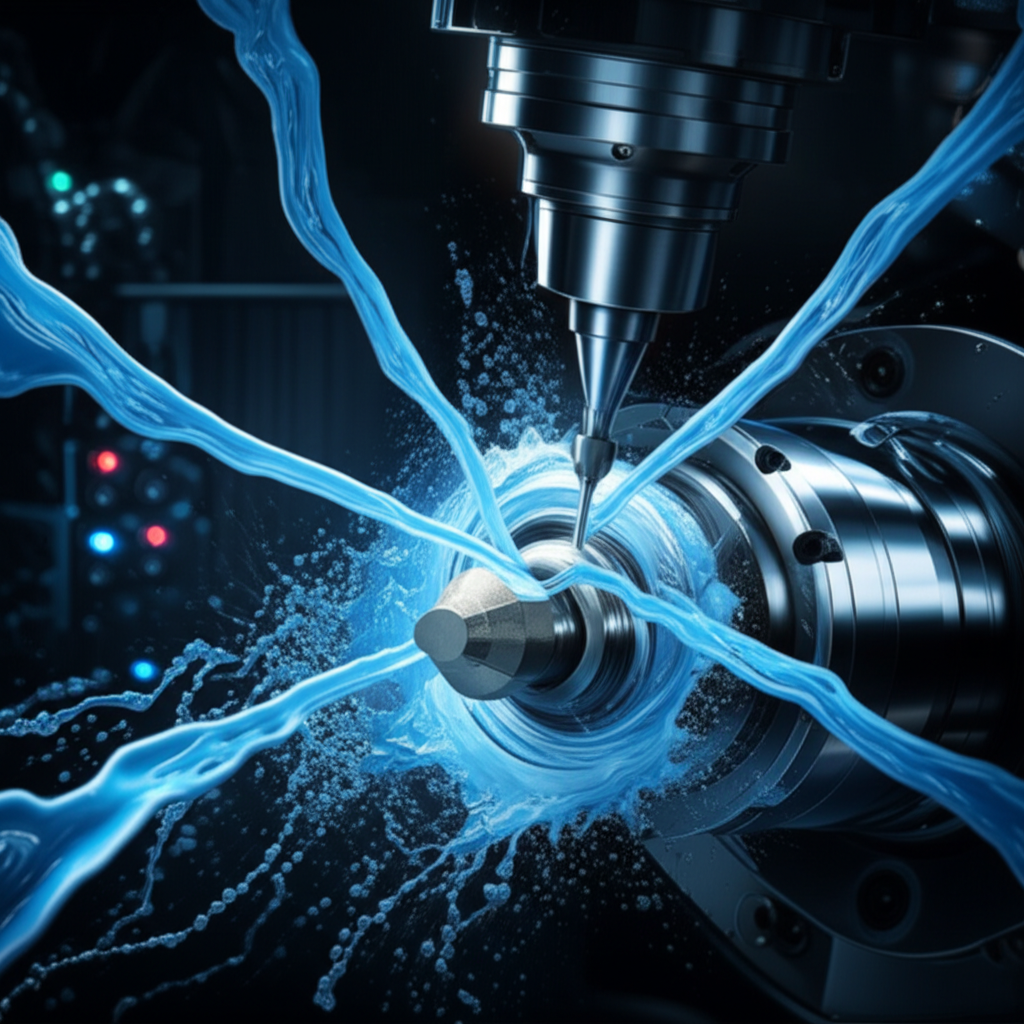Mastering Titanium: Key Machining Challenges and Solutions

TL;DR
Machining titanium is exceptionally difficult due to its inherent material properties. The primary challenges of machining titanium stem from its low thermal conductivity, which concentrates intense heat at the cutting edge, and its high chemical reactivity at high temperatures, which causes the material to weld to the tool (galling). These factors, combined with a low modulus of elasticity that causes vibration, lead to rapid tool wear, poor surface finishes, and potential part failure if not managed with specialized strategies.
The Science Behind the Struggle: Why Titanium Resists Machining
Understanding the challenges of machining titanium begins with its fundamental material science. Unlike common steels or aluminum, titanium possesses a unique combination of properties that are highly desirable in finished components but create significant hurdles during fabrication. These characteristics demand a complete rethinking of traditional machining approaches, focusing on managing heat, pressure, and chemical reactions at the tool-workpiece interface.
The most critical property is its remarkably low thermal conductivity. While materials like aluminum and steel quickly dissipate heat away from the cutting zone, titanium acts as an insulator, trapping thermal energy at the point of the cut. This causes temperatures to escalate rapidly, often exceeding 1,000°C, concentrating extreme stress on the cutting tool's edge rather than being carried away by the chip. This intense, localized heat is the primary driver of premature tool wear and failure.
Furthermore, titanium exhibits high chemical reactivity, especially at the elevated temperatures generated during machining. This reactivity causes titanium chips to chemically bond or weld to the cutting tool's surface, a phenomenon known as galling or built-up edge (BUE). This welded material alters the tool's geometry, increases cutting forces, and can eventually break off, taking a piece of the tool with it and causing catastrophic failure. This tendency requires specialized tool coatings and constant lubrication to create a barrier between the workpiece and the tool.
A third significant factor is titanium's low modulus of elasticity. In practical terms, this means the material is relatively 'springy' and tends to deflect away from the cutting tool under pressure rather than shearing cleanly. This deflection can cause tool chatter and vibration, leading to a poor surface finish and dimensional inaccuracies. It also means that sharp tools are absolutely essential; a dull tool will simply rub against the material, generating more heat and causing work hardening, which makes the surface even more difficult to machine on subsequent passes.
Key Machining Challenges and Their Consequences
The scientific properties of titanium translate directly into a set of formidable practical challenges on the shop floor. Each issue feeds into the others, creating a cycle of heat, wear, and potential failure that requires a systematic and strategic approach to overcome. Successfully machining titanium means actively managing each of these interconnected problems.
Extreme Heat Buildup at the Cutting Edge
Because titanium does not effectively conduct heat, the cutting tool is forced to absorb the majority of the thermal energy generated. This extreme heat softens the tool's substrate material, accelerates chemical reactions, and is the root cause of most machining failures. The consequences are severe:
- Accelerated Tool Wear: Heat is the primary catalyst for various forms of tool wear, including flank, crater, and notch wear, drastically shortening the lifespan of expensive inserts and end mills.
- Plastic Deformation: The cutting edge itself can deform under the combined influence of high temperature and pressure, losing its sharpness and effectiveness.
- Compromised Surface Integrity: Excessive heat can alter the metallurgical properties of the workpiece surface, potentially introducing residual stresses that affect the part's performance in its final application.
Built-Up Edge (BUE) and Tool Galling
Titanium's affinity for welding to other materials under pressure and heat leads directly to BUE. This occurs when small particles of the workpiece adhere to the tool face, growing into a larger mass. This is not a passive issue; it actively degrades the machining process. The consequences include:
- Poor Surface Finish: As the BUE periodically breaks off, it mars the newly machined surface, leaving a rough and unacceptable finish.
- Increased Cutting Forces: The altered tool geometry becomes less efficient, requiring more force to cut and generating even more heat, exacerbating the problem.
- Chipping and Tool Failure: The unstable BUE can break away violently, often taking a piece of the tool's cutting edge with it and leading to immediate failure.
Difficult Chip Formation and Control
Effective chip control is fundamental to any machining process, as chips are the primary mechanism for removing heat. Titanium typically produces long, stringy, and tough chips that do not break easily. This creates a hazardous situation where chips can wrap around the tool or workpiece, an issue known as a 'bird's nest.' The consequences are:
- Tool and Workpiece Damage: Entangled chips can damage the cutting tool and scratch the finished surface of the part.
- Inhibited Coolant Flow: A mass of chips can block the flow of coolant to the cutting zone, leading to a rapid spike in temperature and tool failure.
- Poor Heat Evacuation: The ideal chip is thick enough to carry heat away. The long, thin chips often produced in titanium machining are inefficient at this, keeping heat concentrated at the source.

Strategies for Success: Overcoming Titanium Machining Hurdles
Despite the difficulties, titanium can be machined successfully and efficiently with the right combination of technology, strategy, and expertise. Success hinges on a holistic approach that addresses heat management, machine stability, and tooling selection simultaneously. The goal is not to fight titanium's properties but to work within their constraints.
1. Tooling Selection and Geometry
The cutting tool is the first line of defense. Standard tools used for steel will fail quickly. For titanium, tooling must be specifically designed to resist heat and abrasion. Sharpness is non-negotiable to prevent rubbing and work hardening. Key considerations include:
- Tool Material: Micro-grain carbide grades are the standard due to their toughness and heat resistance. High-speed steel (HSS) is generally unsuitable for production-level work.
- Coatings: Advanced physical vapor deposition (PVD) coatings like Titanium Aluminum Nitride (TiAlN) are essential. They create a thermal barrier, increase surface lubricity to prevent galling, and protect the carbide substrate.
- Geometry: Tools should have a positive rake angle and sharp cutting edges to shear the material cleanly. A moderate flute count (e.g., 4-7 flutes) on end mills can be effective because it allows for lower radial engagement while maintaining productivity.
2. Optimized Speeds and Feeds
The mantra for titanium is often 'low speed and high feed.' High cutting speeds generate exponential heat and must be avoided. A higher feed rate ensures the tool is constantly engaged in cutting fresh material, minimizing rubbing and work hardening. Maintaining a constant feed is critical to avoid dwelling in one spot. A general starting point for Ti-6Al-4V is a cutting speed of 40-60 m/min with a feed rate of 0.05-0.15 mm per tooth, adjusting based on the specific application.
3. Cooling and Lubrication
Because heat is the primary enemy, coolant application is arguably the most critical element. A low-volume flood coolant is insufficient. The best approach is a high-pressure coolant (HPC) system, delivering jets of fluid at over 70 bar (1,000 psi) directly into the cutting zone. This serves two purposes: it effectively quenches the heat at the source and provides the force needed to break chips and blast them away from the work area, preventing recutting and chip nests.
4. Machine and Setup Rigidity
Due to titanium's low elasticity and tendency to cause vibration, machine rigidity is paramount. Any chatter will be magnified, leading to poor surface finish and tool life. The entire system—from the machine spindle to the tool holder and the workholding fixture—must be as stable and robust as possible. Companies requiring precision titanium components often rely on specialized providers. For example, services that leverage advanced 4 and 5-axis CNC machining centers are better equipped to handle these demands. For those needing custom parts with tight tolerances, a provider like XTJ's CNC machining services can deliver components that meet stringent specifications for industries like aerospace and medical, where material performance is critical.
Machinability Across Titanium Grades
It is crucial to recognize that not all titanium is the same. The machinability of titanium varies significantly between its different grades and alloy compositions. Broadly, titanium can be categorized into four groups: commercially pure (CP), alpha alloys, beta alloys, and alpha-beta alloys. Each presents a different level of difficulty.
Commercially pure titanium, such as Grade 1 and Grade 2, is the softest and most ductile, making it the easiest to machine. It is still challenging compared to steel, but the cutting forces are lower and it is less abrasive. These grades are often used where extreme strength is not the primary requirement, but corrosion resistance and formability are.
The difficulty increases dramatically with alloys. The most common titanium alloy, Ti-6Al-4V (Grade 5), is an alpha-beta alloy and is significantly harder and stronger than pure titanium. The alloying elements—aluminum and vanadium—enhance its mechanical properties but reduce its thermal conductivity even further and exhibit low abrasion resistance. Other, more advanced alloys, such as near-beta alloys like Ti-5Al-5V-5Mo-3Cr, are developed for even higher strength applications and are considered extremely difficult to machine, requiring even more conservative parameters and robust processes.

Frequently Asked Questions
1. Why is machining of titanium difficult?
Machining titanium is difficult primarily due to its combination of low thermal conductivity and high chemical reactivity. It traps heat at the cutting tool instead of dissipating it, causing extreme temperatures that lead to rapid tool wear. At these temperatures, it also tends to weld itself to the tool, damaging both the tool and the part's surface finish.
2. Why is titanium so hard to cut?
Titanium's hardness is only one factor. Its poor heat dissipation causes cutting tools to overheat and fail quickly. Additionally, the material work hardens easily; if cutting parameters aren't perfect, the act of cutting makes the material surface harder and more difficult for the next cut. This requires a delicate balance of low speeds and high, constant feeds to prevent both overheating and work hardening.
3. What is the most difficult metal to machine?
While titanium is famously difficult, many experts consider nickel-based superalloys like Inconel to be even more challenging. Inconel retains its high strength at extreme temperatures even better than titanium, making it incredibly abrasive and tough on cutting tools. Both material families require highly specialized tools and techniques.
4. How hard is it to mill titanium?
Milling titanium is very demanding. It requires a rigid machine with a high-torque spindle, specialized carbide tooling with advanced coatings, and a high-pressure coolant system. Tool paths must be carefully programmed to maintain constant tool engagement and avoid sharp directional changes that can shock the tool. Success requires careful planning and adherence to best practices for heat and vibration control.
-
Posted in
cnc machining, manufacturing, material science, titanium machining, tool wear





